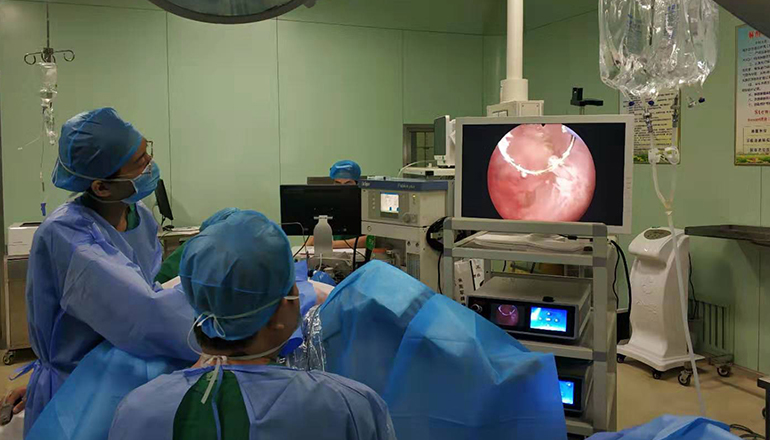- Shanghai, China
- [email protected]
- +86-21-58189111
Hysteroscopic myomectomy is a minimally invasive surgical procedure that is used to remove uterine fibroids (also known as myomas) that are located inside the uterus. Uterine fibroids are benign growths that can cause a range of symptoms, including heavy menstrual bleeding, pelvic pain, and infertility.
Hysteroscopic myomectomy is performed using a hysteroscope, which is a thin, flexible instrument that is inserted through the cervix into the uterus. The hysteroscope contains a camera and specialized instruments that allow the surgeon to visualize the fibroid and remove it through the cervix.
During the procedure, the surgeon will use a wire loop or a specialized instrument called a resectoscope to remove the fibroid. The fibroid is cut into small pieces and removed from the uterus using suction. The procedure is usually performed under general anesthesia and is typically an outpatient procedure, meaning the patient can go home the same day.
After the procedure, patients may experience mild cramping and vaginal bleeding, which usually resolves within a few days. Patients may also be advised to avoid sexual intercourse and strenuous activity for a period of time to allow the uterus to heal.

Hysteroscopic myomectomy has several advantages over traditional open surgery, including less scarring, less pain, and a faster recovery time. The procedure is also less invasive and has fewer complications, making it a preferred option for many women.
However, not all fibroids are suitable for hysteroscopic myomectomy, as the location and size of the fibroid will determine whether the procedure is appropriate. Additionally, some patients may require multiple procedures to fully remove the fibroid.
Hysteroscopic myomectomy is a safe and effective procedure for the removal of uterine fibroids located inside the uterus. It can help alleviate symptoms and improve the quality of life for women suffering from fibroids. Patients should consult with a qualified gynecologist or reproductive specialist to determine if this procedure is appropriate for their individual needs and circumstances.
In addition to hysteroscopic myomectomy, there are several other treatment options for uterine fibroids, including medication, traditional surgery, and non-surgical procedures like uterine fibroid embolization (UFE) or magnetic resonance imaging-guided focused ultrasound surgery (MRgFUS).
It is important for patients to discuss their treatment options with their healthcare provider and weigh the benefits and risks of each option before making a decision. Factors like the size, number, and location of the fibroids, as well as the patient's age and desire for future fertility, will all play a role in determining the most appropriate treatment plan.
In conclusion, hysteroscopic myomectomy is a valuable option for the treatment of uterine fibroids located inside the uterus. With its minimally invasive approach, the procedure offers many benefits over traditional surgery and has a high success rate when performed by a skilled and experienced surgeon. Patients should work closely with their healthcare provider to determine if this procedure is appropriate for their individual needs and circumstances, and to explore other treatment options if necessary.
Leave a Comments